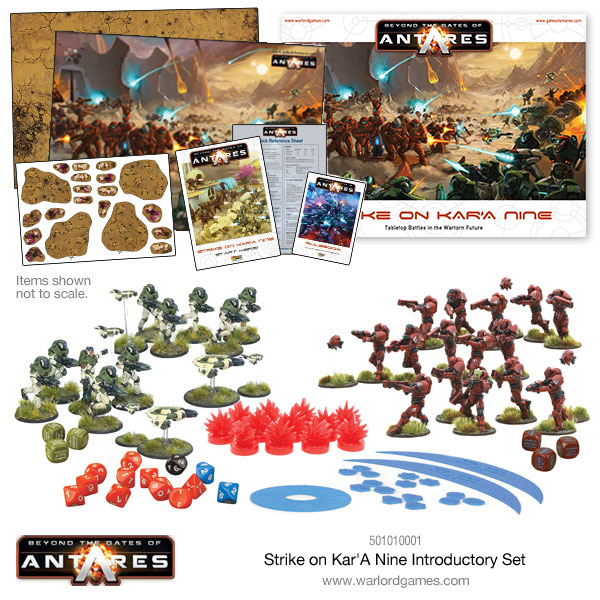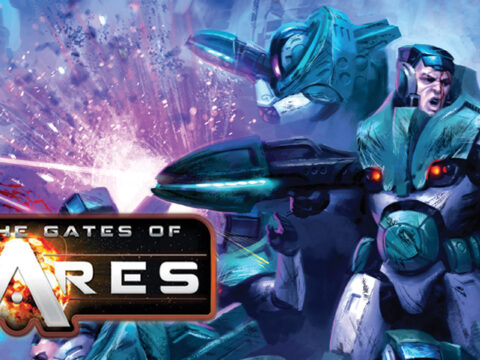Interstellar travel in Beyond the Gates of Antares, part II
By Tim Bancroft
In the previous part of this series of articles, we looked at the first interstellar flight of a young citizen of the PanHuman Concord, Dorun Metarl. We followed his first interstellar flight through the Gates of Antares aboard the massive liner, The Holiday of a Lifetime. Whilst the trip from his home system of Salah to the nearby Nayala only took nine days, he ended up 6,700 light years from home. During the trip he also experienced the slowing down of time on the surface of Antares such that, whilst the total journey time was only eighteen days for him, almost a month passed on Salah for his family and friends.
This time we’ll be looking at his later career, a few years after Dorun joined the exploration corps of the PanHuman Concord. He has been trained in exploration techniques, sensors management, shipboard maintenance, piloting and interstellar navigation, the perils and science of Antares and has finally been given his own, one-man scout ship. His task? To search for new gates – shipping hazards – within the boundaries of the PanHuman Concord’s sphere of influence on the surface of Antares.
Exploration and scouting of new gates is a necessity, both to defend against the emergence of possible enemies and for ideological reasons – that is, to bring new citizens into the embrace of the IMTel. It has only been 1,300 years since the Antares started rebuilding the gate network but, in that time, gate scientists estimate it has reconnected over 5.5 million gates: an average of over 4,000 a year.
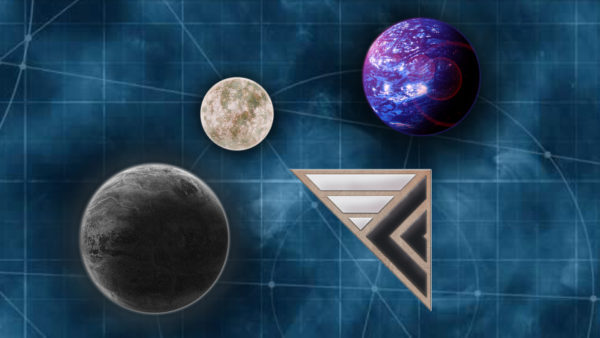
These gates can be created anywhere, not just on the ‘edges’ of the Concord’s sphere of influence as the Antares machine itself does not appear to recognise the existence of artificial borders. To ensure the safety of travellers, scout ships have to patrol the regular routes across Antares surface so that any new gate can be identified and, if necessary, have IMTel reroute the traffic between existing gates.
There is a subtle difference between scouts and explorers. Scouts are those who track new gates, check they are viable and then determine what lies beyond the gate. In contrast, Freeborn or Boromite explorers go much further into a new system in an attempt to determine if it is worth exploiting. In contrast, Isorian and Concord explorers are merely the first wave of the IMTel’s efforts to bring a new system under its protection.
For now, Dorun is a scout. This involves travelling around the accessible Antares photosphere looking for the broadcast signals of new gates. Here, ‘accessible’ is the key word as the Antares photosphere is very different to many other giant stars, extending at least 2 SAU (standard astronomical units) below the surface. Gates can be found anywhere in the photosphere, but are always spaced so they do not intertwine with the twisting tunnels of other gates. The tunnels’ effect on the fabric of Antares being seen as ghostly trails leading up (or down) into the heart of the star-machine.
It is well-known that gates broadcast a faint signal to advertise their location, so at the higher depths a new gate is relatively easy to find, though its signal does not travel far before becoming drowned in the noise of other gates and the background static of Antares itself. For convenience, however, gate scientists have divided the depths at which a gate resides into 16 levels below the surface, each 20 million kilometres deep. Level-1 is the highest, extending from 10 million to 30 million kilometres below Antares’ surface whilst Level-16 is the deepest.
There is a problem in exploring gates at the lower depths. The ‘critical depth’ that is so feared starts around level 9, though in places can start much deeper than that. Not only are the plasma flows and storms more dangerous and erratic at the deeper levels, but the gates are spaced further apart. So whilst there may be around two and a half million gates on the surface, Level-16 is thought to only play host to a few thousand. The advantage, of course, is that with fewer gates their signals can be detected further away; the disadvantage is that a ship may be destroyed before it finds a new gate.
The key to opening the gate is a well-known variation on the signal it broadcasts to announce its whereabouts. But when a scout like Dorun finds a new gate, he does not immediately transmit the signal and enter the tunnel. The problem is that each tunnel has a different transit time that varies from a few hours to many days – or perhaps forever. It seems that some tunnels loop back on themselves so that a ship may enter the gate only to find itself forever travelling along a tunnel that never seems to terminate. No one knows if such tunnels may, eventually, spit out their cargo but, on the other hand, no one really wants to risk their life on such a venture.
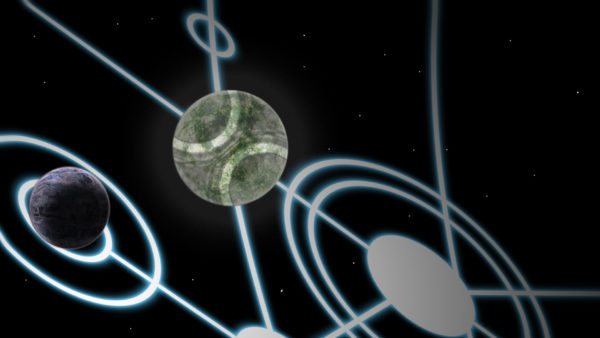
So Dorun’s first task is to launch a probe or two through the gate and wait for it to return. The gate probes are fairly intelligent drones equipped with basic sensor equipment and some thrusters. The probes’ task is to pop out the gate at the other end, determine if no immediate threats are in the vicinity, then return through the gate to hand over their newly-acquired data to the scout ship.
If the gate seems viable, Dorun will take his 120 metre long scout ship through the tunnel and into the target system. At 120m long, his ship is quite small but it only has space for one crewman. There are larger scout ships, perhaps up to 150m long, that take four or more crew and even larger explorer ships of up to 175m with orbit-to-ground shuttles and exploration vehicles. What takes most of the space on such scout ships is not just fuel, provisions and probes for extended voyages, but also extensive sensor arrays, powerful gravitic annihilation (GA) drives and additional shielding and armour to protect the ship on its journey at all depths around Antares.
Having arrived in a new system, Dorun makes an extensive survey, trying to detect any signs of intelligent life and tracking any major asteroids and planets in the system. The position of known signal stars are mapped. The ships AI then tries to match up the system with an extensive database of systems from previous ages and, very often, the system is identified as one that has been ‘reconnected’ to the network. Occasionally, however, a completely new system is found and the pilots of scoutships are often given the privilege of naming the new system – with the advice of the IMTel, of course.
It would be a very rare occasion for Dorun to pilot his scout ship further into a system but, occasionally, it might be necessary. Some gates, for example, connect to systems that have giant stars at their core: in such cases the gate can be hundreds of SAU away from the star so a closer look might be needed to identify the system or find signs of life – it is at times like these that the powerful GA drives are most needed to shorten the journey times. Other gates may connect to complex binary or ternary star systems, in which case scientific assessments need to be taken for later follow-ups by scientific research and exploration teams.
Nonetheless, Dorun spends very little time in each system he discovers (or rediscovers). As soon as he finds a system, he has to take the news to the local IMTel for dissemination across the Concord. This, of course, may take months, perhaps years, but locally the map of each gate is as accurate as the Concord can make it.
Dorun loves the travel, however, and does not mind being on his own – traits first identified by the IMTel years ago on that first cruise. His own scout ship is called the Holiday Horizon, a name some find somewhat corny but which has a special meaning for Dorun. The Horizon is a one-man ship about 120m long. It has an AI (artificial intelligence), of course – its controlling, electronic ‘brain’ – as well as a range of buddy drones. It also has excellent, comfortable facilities to ensure Dorun remains sane and well looked-after. The ship carries a huge historical, astronomical and archaeological memory bank as well as an array of compacted scout probes.
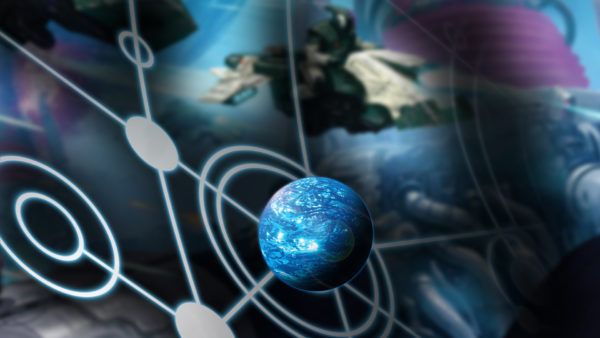
We have already mentioned the ship’s defences, most of which are meant to protect it from gate travel. However, the ship’s GA drive fields and massive acceleration (up to 200G on Concord scouts, 220G on Isorian) is a useful protection, allowing a safe velocity of almost SOL 13 along a system’s dangerous, ecliptic plane, but the fields and enhanced, anti-asteroid kinetic shielding can also function as defence against attack if the need arises. Offensively, however, the ship has only a few automated plasma weapons which can also function as anti-asteroid defences when the ship is drifting system-side of a gate and performing sensor sweeps.
Periodically, of course, the ship has to call in to a known Concord maintenance depot for refueling and taking on convertible mass for its small fabricators. At such times, the drives and armour are also checked to ensure they can continue to withstand the storms of Antares: being a scout is a risky job but the IMTel does not wish it to be more dangerous that it has to be.
Overall, though, Dorun is proud of his ship and has a good relationship with its AI. Concord scout ships have far better drives than Algoryn (at 150G and SOL 11) or Boromite (100G and SOL 9). Further, his scout ship can quickly outrun any Ghar he encounters – though he is highly unlikely to encounter Ghar so deep in Concord space – as the fastest Ghar ship tops out at 55G and can only be run at SOL 8 along the plane of ecliptic before its GA fields risk being breached.
For Dorun, though, all this is academic as he operates far from the Determinate and its empires and petty kingdoms: his only real risk is rediscovering an ancient system that might just still play host to a dangerous civilisation – any Ghar left from previous ages are likely to have exhausted and polluted the system’s resources. So Dorun’s exploration activities are relatively safe, fascinating and exciting. For him, it is the perfect life, a career recommended to him by the IMTel.
Dorun knows the IMTel has his needs at heart.
Tim Bancroft runs the Freeborn Shard podcast, is also the first Antares Gate Builder and has just finished a novel based in the universe of Beyond the Gates of Antares (due out 2017).
Follow Tim on his Blog at: timbancroft.me.uk.
Listen to the Freeborn Shard at: soundcloud.com/the-freeborn-shard.
Do you have an article within you? Are you itching to show your collection to the world of Bolt Action? Then drop us a line with a couple of pictures over on our Facebook page or share with all over at the Warlord Forum
Begin your Antarean adventures
Strike On Kar’A Nine is the perfect way to build your forces and learn to Battle in Antares:
